The modern musical world is full of technical innovations that allow for the creation of music and streamline the music creation process. Among the most important innovations in music is MIDI.
However, not every musician fully understands MIDI and what it means in a musical context. Every musician should take a deep dive into MIDI, as the modern musical world would not be the same without it.
MIDI stands for Musical Instrument Digital Interface and is a standardized system for digital instruments as they interface with computers and DAWs. MIDI allows a digital instrument to trigger a pre-loaded sample, or it can be used to program digital music. MIDI is the standard for digital music.
There are so many different ways to make music in the modern world that it can be easy to miss a few, and it is even easier to misunderstand a few as well. MIDI is a complex aspect of modern music, and anyone who uses it should take the time to understand it. What is MIDI in music? Let’s find out!
What Is MIDI In Music?
All modern musicians are familiar with the term MIDI. This acronym has become part of everyday life in the modern musical world, but the reality is that very few musicians or producers actually understand this technology. So, what is MIDI in music?

MIDI stands for Musical Instrument Digital Interface. Without making the definition too complicated, MIDI is a way for digital instruments to interface with digital music production software.
MIDI instruments act as triggers and do not create their own audio. Rather, they activate a set of pre-determined audio samples.
This technology was developed in the early 1980s as a way to standardize the range of digital instruments that were developed at the time.
Without this interface, every digital instrument from every company and brand would require its own software to function, but with the invention of MIDI, the entire industry runs on one standard, making all digital music creation far easier and straightforward.
There are several uses for MIDI in the music industry, including digital programming sounds into musical arrangements, using MIDI instruments to physically play electronic music, recording music, transferring music from physical instruments into digital audio workstations, and even as triggers for live effects and sounds.
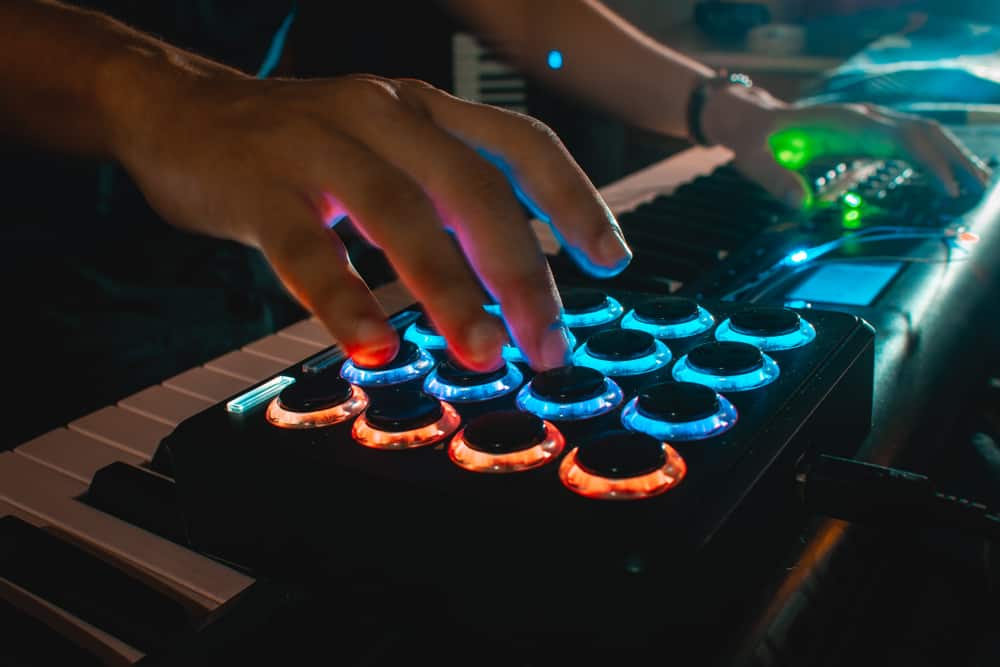
MIDI is a tremendous invention that revolutionized the world of music forever. The music industry today would simply not be the same without it.
How Does MIDI Work?
Now that we have defined what MIDI is in music, it is always to understand how MIDI works. This system is not as complex as it may seem, and it is based on very simple technology.
The fundamentals of how MIDI works are essentially based on digital switches.
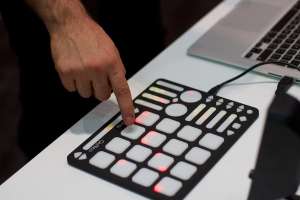
MIDI channels can control 16 individual MIDI signals at once, which can be combined and spread out to control multiple triggers.
The basics of the technology are that the MIDI device, be it an instrument or a controller of some kind, is programmed to send a MIDI signal that tells the computer that it is connected to how long the signal is triggered.
The computer has a preset packet of sound or audio samples that are configured to play when the MIDI controller sends the activation signal.
When the signal is received by the computer to activate the same sound, it tracks or plays the sample for the duration that the signal was triggered.
Essentially, this allows musicians to ‘play’ digital audio samples and sounds as if they were physical instruments.
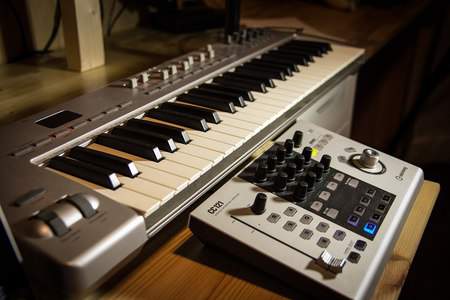
MIDI can be programmed manually by inputting signal data on a DAW timeline, or it can be used in one of several ways:
- with code
- by simple hardware (such as a computer keyboard)
- by real musical instruments (provided they are interfaced with the right hardware)
- by MIDI controllers
The technology is a simple array of digital switches. When a signal is triggered, the switch is opened. When it is released, the switch is closed, and the computer that the system is used with tracks the duration of the open switch time and assigns a sound to that duration.
This is an oversimplified explanation of how MIDI works, but the technical explanation of MIDI changes as the technology used for it changes. This simplified explanation of a MIDI signal chain will always remain the same, even if the tech becomes fully digitized with no physical or manual input.
What Are MIDI Instruments?
MIDI instruments are among the most popular and effective means to use MIDI technology. Still, it can sometimes be unclear what the definition of a MIDI instrument is.
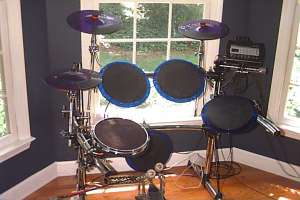
A MIDI instrument is a physical instrument that is designed to trigger MIDI signals when it is played.
These instruments can be dedicated MIDI instruments that produce no sound of their own. For example: dedicated MIDI keyboards, MIDI drum pads, MIDI triggers, and even MIDI guitars.
Some instruments that do generate their own sound, such as stage pianos and electric drum kits, can be designed for both live music and to trigger MIDI signals.
This is particularly useful for live performances, as these instruments can sound like regular instruments or they can be used to trigger MIDI sounds and create live electronic music. These instruments can also be sued to record a MIDI track of whatever they are playing live.
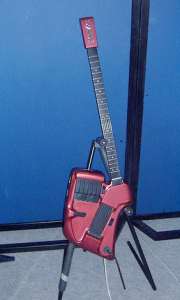
Some MIDI instruments are regular instruments that are retrofitted with MIDI-trigger hardware that translates what the instrument plays into MIDI signals.
There are many forms of MIDI instruments, and they can be used in many ways, but the main use of MIDI instruments is to trigger MIDI samples, enabling a musician or producer to use a physical instrument to play digital sounds.
MIDI instruments allow musicians to load up any samples they choose and play them with a physical interface. This brings life to digital music and allows the musician to be as creative as they want to be, rather than having to program in the MIDI signals to coalesce as music.
Playing MIDI sounds with a MIDI instrument is the best way to make digital music sound organic and lively. MIDI songs that are simply programmed tend to lack depth and feel, and this can be brought back by using a MIDI instrument to create music with digital samples.
Where Is MIDI Used In Music?
MIDI is so common in modern music that it can be difficult to pinpoint when it is used. This leads many people who are interested in music production to wonder where MIDI is used in music.
MIDI can be used in any area of music, but it is usually used in the area of music creation and production, especially in digital and electronic music.
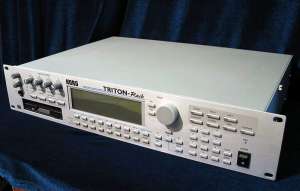
Bands that use live instruments do not always use MIDI, except for adding in some extra sounds and tones. Any music that is made digitally (including all forms of electronic music and most hip-hop) uses MIDI to create some or all of the music.
MIDI can be used to generate any tone or make any sound that is loaded as a sample into the MIDI software. This means that anything from a human voice to an individual piano key or guitar note can be triggered by MIDI.
It can even be used to trigger entire musical sequences that are pre-programmed for a specific trigger function.
MIDI is used in the creation of all modern digital music, whether it is played with a MIDI instrument or if it is programmed in by hand. It can be heard in most modern pop music and is the backbone of all electronic music.
Is MIDI Better Than Recording Audio?
A burning question asked by many young musicians is whether or not MIDI is better than recorded audio. For example, if you have the ability, is it better to play and record a real piano, or is it better to use a MIDI controller to play piano samples?
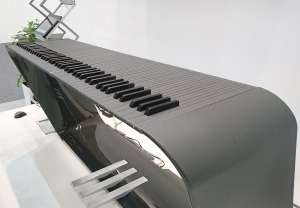
This question is not as straightforward as it seems, as there are many ways to approach the answer.
The truth is that MIDI is a great way to make music. However, the quality of the music that can be made with MIDI is entirely dependent on the quality of the samples, the talent of the musician, the quality of the controller, and how well the producer can process and mix the samples that are played.
Similar issues occur with recording physical instruments. If the instrument is poor, it will not sound good, and if the musician cannot play it well, it will not sound good either. However, there are other issues that occur with recordings that are not present with MIDI.
Recordings can be hindered by poor recording equipment and even poor technique, such as bad microphone placement or even by a bad-sounding room.

The beauty of MIDI is that it always sounds the same unless the signal is changed or processed differently. A MIDI sample will sound the same regardless of the weather, how the musician is feeling, how well the instrument is tuned, or what the construction of the room is.
By extension, then, MIDI is superior in many ways to live recorded instruments. However, there are some ways that recordings are better than MIDI.
MIDI will always sound robotic and somewhat lifeless unless it is very well well-processed, programmed, performed, and timed.
Musical instruments have a magical quality that can allow them to sound brilliant in the hands of a good musician, even if the instrument itself is not very good. The way a musician is able to draw music from an instrument adds life, sound, and feel to the music, as opposed to the ‘programmed’ nature of music made with MIDI samples.
This all means that MIDI and audio recordings both have their place in music and can be used to create beautiful compositions. They both have strengths and weaknesses, and they must both be used well to produce something good.

The defining factor is the type of music that is made.
MIDI is better for electronic music, and audio recordings are better for musical instruments and voices.
Do You Need To Use MIDI?
MIDI has become so prevalent in modern music that it feels like no producer or musician can get by without it. This leads many musicians to wonder if they need to use MIDI to make good music.
MIDI is a useful tool for musicians and producers, but it is not the only way to make good music. MIDI should be used where MIDI is required. The same is true for audio recordings.

If your music does not call for the use of MIDI, it is not necessary to use it. If you prefer the sound of live instruments, or if you want to use recordings rather than samples, there are excellent ways to make music with these methods rather than using MIDI.
However, if you want to use samples or digital sounds, or if you have no access to or ability to play live instruments, then MIDI is the best way to go about making music.
You do not need to use MIDI to make music or to make your music better. MIDI is a good tool, but it is not the only tool. Use whatever production methods work best for you, and stay true to the sound of the music that you want to create.
Conclusion
MIDI in music is a way for digital instruments to correlate with digital music samples. This technology has given musicians the ability to create entirely digital music, which has produced some of the most unique and wonderful-sounding tracks ever composed.
There are several ways to use MIDI in music, and the most creative musos will always find a way to use it well. Take the time to understand MIDI and learn how to use it, and you will surely become a better all-around musician and producer.
You can learn about spectral effects here.
